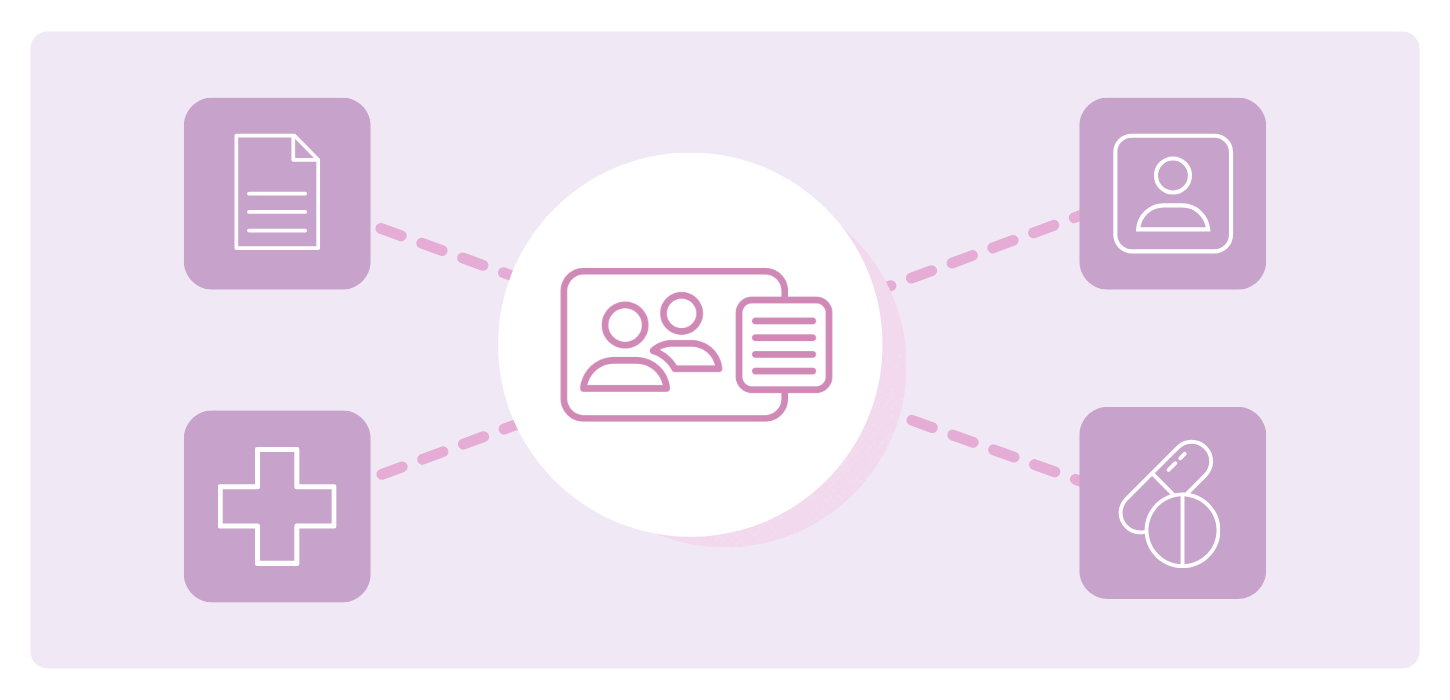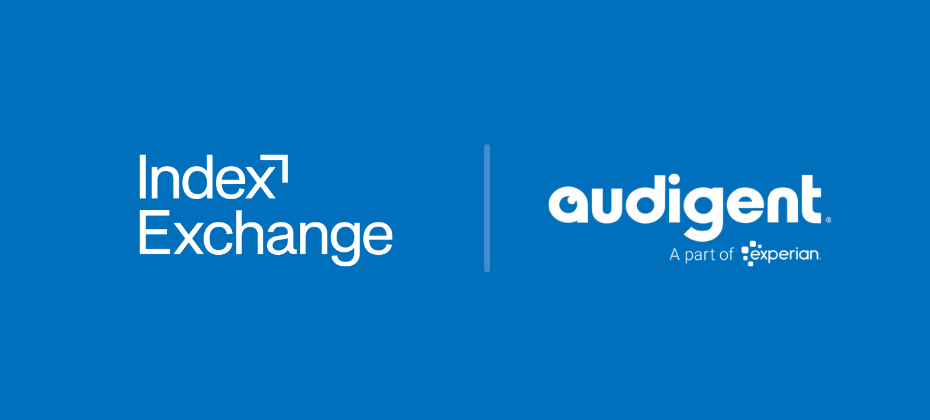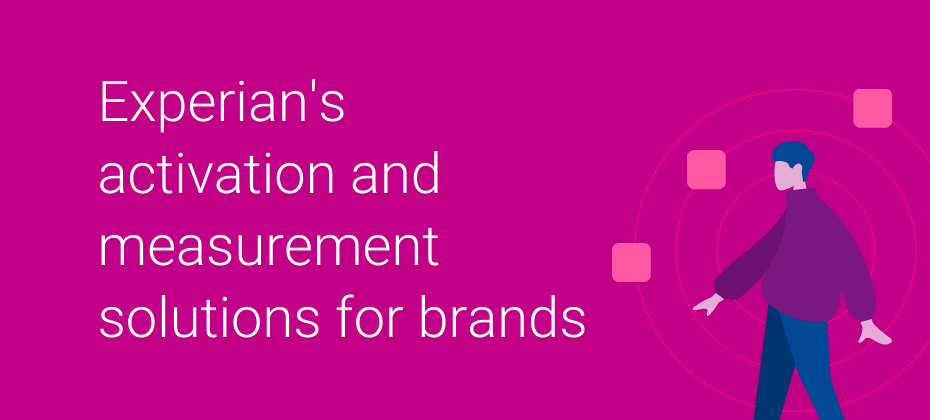At A Glance
Identity resolution unifies fragmented IDs into complete customer profiles, helping companies understand their audiences and deliver personalized, privacy-compliant experiences in a cookie-light world. With Experian’s AI-powered identity resolution solution, marketers gain the scale, accuracy, and compliance to compete while making marketing more human.In this article…
Every marketer has seen it: a customer browses reviews on a laptop, adds items to a cart on mobile, then “disappears.” In reality, they just likely switched devices or logged in with a different email. Identity resolution connects these scattered signals into a single profile so you never lose sight of the customer journey.
Identity resolution is what helps you keep track of customers who bounce around.
Connecting scattered signals into a single customer profile can help you deliver seamless experiences, meet strengthening privacy standards, turn first-party data into measurable results, and fuel better customer analytics.
See our identity resolution solution in action
What is identity resolution?
Identity resolution is the process of pulling together the different identifiers a customer uses and connecting them to a single profile. Without it, you’re left with an incomplete picture of the customer — like a cart tied to one email, an app login tied to another device, or a loyalty swipe that never links back to the same person.

Common identifiers include:
- Cookies: Short-lived browser data
- Emails: Plain-text and hashed
- Device IDs: Mobile advertising IDs (MAIDs) or app-based identifiers
- Loyalty IDs: Program numbers that tie online and offline activity
- Hashed PII: Personally identifiable information (PII) encrypted for privacy
Ultimately, identity resolution can help you recognize the same customer wherever they engage.
Why does identity resolution matter now?
Marketers face incomplete views, data silos, privacy regulations, and shrinking visibility:
- Rising consumer expectations: People want seamless, personalized journeys across touchpoints.
- Privacy-first environment: Consumer privacy legislation (like the GDPR, CCPA, GLBA, FCRA, and new state laws) makes compliance non-negotiable.
- Signal loss: The decline of cookies, MAIDs, and walled gardens are pushing brands toward first-party data.
Experian utilizes AI and machine learning to fill these gaps, predict behaviors, and connect signals across devices — providing marketers with a clear, privacy-safe view of their customers, even when traditional identifiers are missing.
In this environment, identity resolution matters because it gives marketers a way to deliver seamless, personalized customer experiences and engage audiences effectively while respecting their privacy. It’s the basis for turning consented first-party data into measurable marketing outcomes without sacrificing trust.
Why is identity resolution critical in a privacy-first world?
Even as cookies linger, marketers have already shifted their strategies to rely on first-party data, where choice and transparency are the baseline expectation. At Experian, our long history as a regulated data steward makes us a uniquely capable and trusted partner for managing modern compliance expectations. Our identity resolution solutions maximize the value of permission-based data while meeting consumer demand for privacy, personalization, and control.
Struggling with scattered customer data? Experian makes identity resolution seamless
How does identity resolution help brands?
Identity resolution turns fragmented signals into unified profiles that drive personalization, efficiency, and compliance. Here’s how it creates measurable business impact.
Creates a unified customer view
One of the biggest advantages of identity resolution is the ability to integrate data from loyalty programs, point-of-sale (POS) systems, customer relationship management (CRM) platforms, web analytics, and offline sources into a single, comprehensive profile. Experian strengthens identity resolution with AI-driven clustering models that resolve household and individual identities across billions of signals with greater accuracy.

With a clearer picture of each customer, brands see higher match rates and larger addressable audiences, which translates to more substantial reach and better return on ad spend (ROAS).
Enables better personalization
Customers constantly switch devices, update their information, and change preferences. Experian makes it easier to keep pace with these changes through frequent data enrichment and near-real-time identity resolution via Activity Feed.
Combined with our long-standing use of AI and machine learning, this approach ensures shifting behaviors are captured quickly, enabling timely personalization, and more responsive engagement.

With less delay from data to action, the result is faster response times and higher conversion rates.
Improves the customer experience
Customers notice when brands deliver relevant ads and contextual content across every channel. Consistency matters! But consistency doesn’t just happen on its own; it comes from identity resolution, which keeps the customer journey connected.

As brands maintain continuity, they build trust, strengthen engagement, and increase customer lifetime value.
Drives better marketing ROI
Not every profile is valuable. Identity resolution helps marketers identify the highest-value audiences and reduce wasted spend.

That efficiency leads to lower CPA and a higher overall ROI across campaigns.
The power of modeling from a stronger foundation
When you have a unified customer view, your models are built on better data. That means you can find more people who look like your best customers, build more responsive audience segments, and target with greater accuracy. This foundation can lead to better spending, more relevant campaigns, and a higher ROI.
Maintains privacy compliance
With GLBA/FCRA-grade standards and consumer choice mechanisms like opt-outs and data correction, you can protect your brand while maintaining personalization — without compromising legal or ethical safeguards.

What are some identity resolution use cases and examples?
Every industry faces its own unique identity challenges, but identity resolution is the common thread that turns scattered data into connected experiences. Let’s break down how companies in different verticals are putting it to work (and the kinds of results they’re seeing).
Retail and e-commerce
Shoppers bounce between websites, carts, and checkout lines, leaving behind scattered signals in the process. In retail, identity resolution bridges the gap between online and in-store experiences by matching online carts with loyalty swipes or connecting connected TV (CTV) exposure to in-store sales. This means fewer silos, better targeting, and more personalized offers wherever people shop.

Our 2025 Digital trends and predictions report calls out that omnichannel experiences aren’t optional anymore. With CTV and social dominating spend, brands need identity resolution to cut through silos and build a complete view of customer behavior.
Financial services
In financial services, identity resolution makes it possible to deliver personalized, compliant offers like refinancing options for likely mortgage switchers or the right rewards card for frequent spenders.
Our partnership with FMCG Direct to create Consumer Financial Insights® and Financial Personalities® segments helps banks, insurers, and lenders understand behaviors — such as credit card use, deposit balances, and investment habits — without exposing sensitive details.
Read more below about how our financial audiences enable privacy-safe personalization.
Travel and hospitality
Travel decisions aren’t always planned out in advance. Many bookings happen spur-of-the-moment, which is why real-time identity resolution is so powerful; it keeps the journey seamless when travelers jump from phone to laptop to tablet and presents relevant offers right as decisions are being made.
Windstar Cruises put this information into action with Experian’s identity graph to connect digital interactions with actual bookings, which drove 6,500+ reservations and $20 million in revenue.
Media and TV
Viewers tend to hop around between linear TV, streaming apps, and social feeds. And without identity resolution, every screen looks like a different person. Marketers can accurately plan, activate, and measure campaigns by unifying viewing behaviors into one ID with Experian’s AI-powered identity graph.

Optimum Media tackled its multiscreen challenge by partnering with Experian for identity solutions. Layering our audience insights and our AI-driven Digital Graph onto their subscriber data, they were able to connect the dots across channels, reach the right households, and measure results instead of just impressions. In the end, they finally got a clear view of what works across every screen.
Curious how identity resolution can power your customer analytics? We can walk you through it.
Healthcare and pharma
Healthcare marketers can’t afford slip-ups with HIPAA regulations. Identity resolution makes it possible to engage the right patients and providers with de-identified audiences rather than third-party cookies.

At Experian, AI and machine learning have always been part of how we power identity resolution. In healthcare, that means using AI-enhanced modeling to connect de-identified clinical and claims data with lifestyle insights. The result is a more comprehensive picture of the patient journey that helps close care gaps, reduce wasted spending, and improve outcomes.
By working with partners like Komodo, PurpleLab, and Health Union, we make it possible to activate campaigns at scale that boost engagement and adherence while keeping patient privacy front and center:
- Komodo Health enriches our identity graph with insights from millions of de-identified patient journeys plus lifestyle data, giving brands a fuller view of where care gaps exist and how to close them.
- PurpleLab connects real-world clinical and claims data to Experian’s platform, letting advertisers activate HIPAA-compliant audiences across CTV, mobile, and social with the ability to measure real outcomes like prescription lift and provider engagement.
- Health Union contributes a data set built from 50 million+ patient IDs and 44 billion+ patient-reported data points. Combined with our identity and modeling capabilities, this expands match rates and unlocks up to 76% net-new reach, so campaigns reach patients and caregivers in critical health moments.
As a result, healthcare brands can launch campaigns that are privacy-first, highly targeted, and proven to drive meaningful impact.
Audio
People use audio while commuting, working out, and even folding laundry. It can be one of the hardest channels to track because of how frequently listeners switch between apps, stations, and devices.

Experian’s identity resolution partnerships with Audacy and DAX change the game:
- Audacy helps tie scattered listening into a single view, so advertisers can follow audiences across devices and keep ads relevant in the moment.
- DAX pairs Experian’s 2,400+ syndicated audiences with its audio network, enabling brands to target precisely and launch impactful campaigns at scale.
These partnerships turn audio into an accurate channel where ads feel personal, privacy-safe, and measurable.
Gaming
Gamers don’t stick to one platform. Player data gets scattered across mobile, console, and PC, so it’s tough to keep track of individuals. Experian helps stitch those signals together so publishers can finally see the whole picture, personalize gameplay, and keep players coming back.
With enriched profiles, publishers can deliver offers that resonate and unlock fresh revenue by packaging high-value gaming audiences for advertisers outside the industry.
Unity, a leading gaming platform, is tapping into Experian’s syndicated audiences to gain player insights and help advertisers reach gamers across mobile, web, and CTV. For global publishers, unifying player data with Experian has driven higher engagement and stronger ad ROI.
How should I evaluate identity resolution providers?
When choosing an identity resolution partner, look for:
- Data scale and quality: The value of identity resolution depends on how complete and accurate the underlying data is. The right provider should bring together a wide range of identifiers from online and offline sources, maintaining high accuracy so your customer profiles are broad and reliable.
- Match accuracy and recency: The best partners also refresh their data regularly and can blend deterministic (exact, one-to-one matches) with probabilistic (pattern-based matches) methods. That way, you get the accuracy of “this email is definitely that customer” with the reach of “this device likely belongs to the same person.”
- Privacy and compliance readiness: Compliance can’t be an afterthought. Your identity partner should be ready for GLBA, FCRA, GDPR, CCPA, and the latest state-level rules with built-in tools for opt-outs, corrections, and deletions.
- Integration flexibility: A good provider fits into your world, not the other way around. Look for pre-built integrations with your customer data platform (CDP), demand-side platform (DSP), or marketing tech (MarTech) stack so you can get up and running without the heavy IT lift.
- Data analytics capabilities: You need proof that identity resolution drives ROI. Look for closed-loop measurement that ties unified IDs directly to campaign performance, so you can see what’s working and optimize with confidence.
How Experian enables enterprise-grade identity resolution
Experian delivers identity resolution at the scale, accuracy, and compliance required by the world’s largest enterprises. Our solutions are:
- Built on trust: Backed by 40+ years as a regulated data steward and rated #1 in data accuracy by Truthset, so you can act with confidence.
- Powered by our proprietary AI-enhanced identity graph: Combining breadth, accuracy, and recency across four billion identifiers, continuously refined by machine learning for maximum accuracy.
- Seamlessly connected: Pre-built data integration with leading CDPs, DSPs, and MarTech platforms for faster time to value.
- Always up to date: Frequent enrichment and near-real-time identity resolution through Activity Feed for timely personalization and more responsive customer engagement.
- Privacy-first by design: Compliance with GLBA, FCRA, and emerging state regulations baked in at every step, supported by rigorous partner vetting.
The bottom line
Identity resolution turns fragmented signals into connected, measurable, and compliant experiences. From retail to gaming, brands using it see stronger personalization, engagement, and ROI.
With Experian, you get the data, trust, and responsible AI innovation to make identity resolution work across every channel. Our approach uses AI to connect identities, predict behaviors, and deliver personalization that balances privacy with performance. If you’re ready to turn fragmented data into growth, now’s the time to start.
The world’s leading brands trust us to power identity resolution at scale. See how we can do the same for you.
Identity resolution FAQs
Deterministic uses exact identifiers (like an email) for accuracy, while probabilistic uses signals and algorithms to expand reach. Best-in-class providers usually combine both.
Identity resolution helps with personalization by unifying scattered signals into one profile. It reduces wasted spend and increases match rates, which means bigger addressable audiences and higher ROAS.
Yes. With first-party data and hashed PII, brands can still maintain addressability and personalization.
Retail, finance, travel, media, gaming, and audio all use identity resolution to personalize, attribute sales, and improve efficiency.
A customer data platform unifies the data you already own. Meanwhile, we add depth, scale, and higher match rates by layering in our identity graph and data enrichment.
Yes. Experian is GLBA/FCRA compliant, GDPR/CCPA ready, and supports consumer opt-outs and corrections to ensure responsible personalization.
Latest posts

Audigent, a part of Experian, is excited to announce that curated audience and contextual inventory packages are now accessible on Google Display and Video 360 (DV360), delivered via Index Marketplaces. These premium deals offer industry-leading targeting solutions, combining high-quality data and inventory to enhance scale, value, and performance across connected TV (CTV), display, and online video (OLV). The integration launches with over 250 ready-to-run deals covering various sectors, including some available for DV360 buyers for the first time, such as automotive, B2B, seasonal retail, sports fandom, travel, and weather, among others. Each deal combines exclusive audience data with premium inventory under a single DV360 deal ID. The supply-side activation lets you scale campaigns without cookies or device IDs, so results stay consistent even as traditional tracking disappears. "We’re excited to expand Audigent’s curated, data-enriched packages in DV360 with Index Exchange. Putting Experian’s audiences and Audigent's premium supply inside a single deal ID accelerates smarter decisions for marketers—letting brands activate, test, and see results right away.”Chris Feo, Chief Business Officer, Experian Why these packages stand out Unique targeting and supply packages Each package fuses exclusive data with handpicked inventory and ships as a single, ready-to-trade deal ID. Deep partner bench Audiences are sourced from first-party publisher data as well as data leaders such as Experian, Affinity Answers, Acxiom, Bombora, Circana, Dun & Bradstreet, Resonate, Sports Innovation Lab, The Weather Company, and more, providing buyers with deterministic purchase, intent, behavioral, and lifestyle signals in one flight. Future-proofed addressability Packages rely on Audigent’s identity framework, contextual intelligence, and supply-side data activation rather than third-party cookies or device IDs, keeping reach intact as identifiers fade. Three reasons these packages drive results Signal-agnostic reach: Cookieless, device-less targeting preserves scale today and tomorrow. Instant activation: Traders simply add the pre-curated deal ID to a DV360 line item and go live in seconds. Built-in quality assurance: Exclusive audience data is paired with hand-vetted inventory, so you start closer to KPIs from day one. Direct-to-source media buying that pays off By packaging curated, data-enriched deals directly atop Index Exchange, via the Index Marketplaces platform, Audigent eliminates extra hops and integrates premium partner data into a single price, with no additional data management platform (DMP) fees. That means higher match rates, simplified audience management, and a cleaner, greener path that concentrates spend on top-tier publishers. Paired with Index Exchange’s omnichannel reach, brands see stronger performance and lower waste, no trade-offs required. "Our goal with Index Marketplaces is to streamline access to premium supply, high-quality data, and measurable outcomes. Hosting Audigent's ready-to-run deals on Index lets DV360 buyers tap addressable inventory curated for scale, sustainability, and speed – no extra steps, just better results."Paul Zovighian, Vice President of Marketplaces, Index Exchange Real-world use cases Audigent’s deep data collaboration bench isn’t window dressing; it’s baked into every package. Deterministic signals from Experian and fellow data leaders come pre-loaded, so you tap high-intent, high-match audiences the instant you activate a deal ID. In-market auto shoppers Reach consumers actively researching specific vehicle types, such as compact cars, SUVs, trucks, or luxury models, using deterministic data from Experian. These segments predict purchase intent within the next 180 days, enabling the delivery of accurate messaging at the moment of consideration. B2B account growth Target decision-maker employees at companies segmented by employee count: 11–50, 51–250, or 251+, using Dun & Bradstreet’s data. Or reach small business professionals and business decision-makers via deals utilizing Bombora’s data assets. Sports fandom Engage verified MLB fans based on purchase behavior, powered by Sports Innovation Lab. Extend reach to contextual sports content, including live sports and sports-related programming across CTV and OLV. Seasonal retail bursts Engage gift-givers and in-market segments for gifts and occasions. Target DIY home improvers and verified affinity audiences for home projects. Reach back-to-school families by targeting parents preparing for the school year with Affinity Answers’ event-based segments. Weather-driven behavior Activate campaigns based on how real-time or forecasted weather conditions (like sunny days, outdoor activity suitability, or severe weather alerts) influence mindsets and decisions, powered by The Weather Company's data. "This collaboration integrates The Weather Company’s industry‑leading weather forecast data into DV360, the world’s largest buying platform, enabling real‑time relevance through curated deals. Experian contributes deep expertise in consumer audiences, The Weather Company delivers unmatched precision in timing and location, and Index Exchange adds efficiency and transparency – together creating a streamlined, turnkey solution for activation." Dave Olesnevich, VP of Data and Ad Product, The Weather Company Ready to activate? Search Audigent in DV360’s Marketplace, select the Audigent package that fits your KPIs, and add the deal ID to your line item. Prefer a custom build? Reach out to us at partnershipsales@experian to curate a package tailored to your campaign goals. The quickest path to performance is just one deal ID away. Contact us now Latest posts

Brands want more from their media investments: better insights, more efficient reach, and clear proof of performance. Whether you’re starting with high-quality first-party data or need help reaching new audiences, Experian offers flexible solutions to drive reach among key audiences and to measure the impact. We’ve built two primary activation and measurement solutions tailored to how brands operate, so you can spend less time managing data and more time driving outcomes. Use case 1: First-party insights to activation and measurement Best for: Brands with first-party data looking to deepen their understanding of existing customers, activate intelligently, and measure what matters – all through a single trusted partner. Solution: Audience Engine + Outcomes Audience Engine Audience Engine is our self-service platform designed to help you onboard first-party data, gain key insights into your customers, build custom audiences using our powerful data assets, and activate them across 200+ platforms — all within a single workflow. Outcomes Experian Outcomes closes the loop by measuring real-world results of your campaigns (such as visits, purchases, and website actions) and tying them back to specific media exposures across digital and TV channels. Together, these tools offer a full-funnel audience and measurement solution, from planning and activation to proving performance. Let’s bring this to life A leading athletic retailer partnered with Experian and Yieldmo to drive in-store foot traffic, targeting shoppers likely to buy from their competitors during key sales windows. Using Experian’s Audience Engine, which includes our proprietary and third-party data marketplace, Yieldmo built a high-performing, self-serve targeting strategy for the retailer. By combining Experian Audiences with Partner Audiences from Alliant, Circana, Webbula, and Sports Innovation Lab, Yieldmo was able to build apparel and footwear audiences from the data marketplace including: In-store shopper segments Athleisure purchasers Competitive purchasers Audience Engine also enabled Yieldmo to tap into Experian’s identity graph, expanding cross-channel reach and maximizing campaign scale and precision. And while not used for this campaign, our Outcomes solution allows advertisers to tie media spend to in-store activity, so retailers can measure true business impact. Benefits Understand your customers more deeply To reveal behavioral, demographic, and lifestyle trends. Reach your first-party audiences at scale Across top activation platforms, using Audience Engine’s onboarding capabilities. Increase your brand awareness By reaching prospective audiences, using Experian Audiences, Partner Audiences, and lookalike audiences. Measure campaign effectiveness With Outcomes, which correlates media exposures (digital and/or TV) with offline and online conversions, visits, or sales. Optimize future media buys By using attribution insights to refine targeting, creative, and channel mix based on what’s actually driving results. Use case 2: Activation and measurement Best for: Brands that already know who they want to reach and are looking to activate high-quality, data-driven audiences across their preferred media platforms and want to clearly understand what’s driving performance. Solution: Audiences + Partner Audiences + Outcomes Audiences Experian Audiences are pre-built audience segments grouped by shared attributes from Experian Marketing Data built for activation on-the-shelf of top programmatic, TV, and social destinations like FreeWheel, Magnite, and Madhive, in addition to Audience Engine. Partner Audiences Experian's Partner Audiences are high-quality audience segments sourced directly from 30+ leading third-party data providers like Affinity, Circana, and Dun & Bradstreet. These segments are curated across verticals like Business, CPG, Health, Retail, and Travel, and are available through on top media destinations, in addition to our data marketplace for easy selection and deployment. Outcomes Experian Outcomes helps close the loop by tying real-world results back to media exposures across digital and TV channels. Together, these products empower marketers to activate smarter and prove success with confidence. Let's bring this to life A leading fashion brand set out to grow their customer base by reaching high-intent shoppers where they spend their time: online. Their goal: drive e-commerce conversions through a programmatic campaign powered by The Trade Desk. To do it, they needed more than just reach, they needed accuracy. That’s where Experian came in. On The Trade Desk, the brand quickly discovered Experian’s prebuilt audience segments, readily available and easy to activate. They selected: Age Range: 25–44 Women’s Fashion Frequent Spenders: Households identified as frequent purchasers of women’s apparel, cosmetics, jewelry, and accessories—based on verified, consumer-reported transactions from the past 24 months. These segments gave the brand confidence that it was putting its message in front of the right consumers, those most likely to engage and buy. To understand whether their campaign was driving results beyond impressions, the brand implemented a site pixel to capture both top-of-funnel visitation and bottom-of-funnel conversions. Using Experian’s Outcomes solution, they were able to close the loop—tying ad exposure directly to e-commerce sales. The Outcomes report showed clear campaign lift, highlighting which channels and audience segments performed best. Armed with these insights, the brand refined their targeting and messaging for future media buys—boosting ROI with each iteration. Benefits Reach your ideal audience at scale By activating Experian Audiences and Partner Audiences off the shelf at digital and TV platforms. Access privacy-conscious, diverse data Curated by 30+trusted data providers in verticals like Business, CPG, Health, Retail, and Travel without needing to manage multiple data contracts. Understand what’s working Through Outcomes reporting, which connects media exposure to offline and online outcomes like conversions, purchases, or visits. Continuously improve performance By using attribution insights to inform audience selection, creative strategy, and media channel mix for future campaigns. Bring this to your brand Experian’s activation and measurement solutions for brands gives you the tools to act with clarity: from onboarding your first-party data to reaching new customers and tying media back to real results. Whether you’re starting with deep customer insights or building campaigns from scratch, here’s how our solution helps: Audience Engine Onboard your first-party data, gain insights into audience composition, build custom audiences using Experian and Partner Audiences, and activate them across 200+ leading platforms — all through a centralized, self-service platform. Audiences and Partner Audiences Reach high-intent prospects using Experian’s syndicated audiences or custom-built segments from partners like Circana, Dun & Bradstreet, and more. Outcomes Understand what worked. See how media exposure correlates with actions like store visits, quote requests, site activity, or purchases. Every element is built to help you scale campaigns, improve addressability, and tie media spend to results that matter—without the overhead of multiple vendors or disjointed systems. Ready to see it in action? Get in touch with our team. Latest posts

1,000+ ready-made segments, available for activation within Nexxen Audigent, a part of Experian, has officially launched its audiences in the Nexxen demand-side platform (DSP), pairing premium publisher audiences with Nexxen’s streamlined connected television (CTV) and omnichannel buying workflow. Audigent transforms real engagement from premium publishers into over 1,000 ready-to-activate segments—spanning beauty, finance, travel, and more. Three key benefits Signal quality Verified publisher data drives higher match rates and wider look-alike reach. Media impact Reach up to 92 million entertainment fans, 78 million retail shoppers, or 71 million finance intenders across CTV, online video (OLV), and display without guesswork. Privacy and compliance Every segment is built from opt-in, first-party data and delivered through Audigent’s privacy-by-design framework. How Audigent and Nexxen boost your campaigns Now live in the Nexxen DSP, Audigent’s premium audiences plug directly into your existing buying workflow—making it easier than ever to plan, activate, and optimize at scale. Audigent utilizes cookieless, first-party IDs sourced directly from its premium publisher network, allowing advertisers to future-proof campaigns and continue to reach real people across browsers, devices, and CTV. Vertical use cases Auto Target auto intenders as they research new models, then retarget them on CTV during primetime motorsports broadcasts. Retail and CPG Engage retail shoppers with dynamic product ads ahead of peak sales weekends, bridging display and CTV for sequential storytelling. Travel and Hospitality Reach travel planners with destination-specific offers the moment they begin searching for flights. Finance Serve relevant credit card or fintech messaging to finance enthusiasts researching personal finance content. Premium audiences, measurable performance As a part of Experian, Audigent’s audience solution complements our broader identity resolution and activation capabilities, ensuring consistency across every channel. Together with Nexxen’s unified tech stack, advertisers can launch ads faster while respecting consumer privacy. Audience data, targeting, and media all sit in one workflow, making results easy to see and optimize. Contact us Latest posts